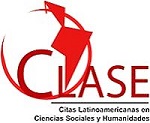The policy deductible maximum wage gap and the case of Ecuador
Keywords:
executives-workers wage gap, wage policy, maximun salaries, income distributionAbstract
Wage gaps between executives and workers have tended to widen since the start of neoliberal globalization in the 70s. This growing gap helps explain the collapse of labor participation in the primary distribution of income and the growth of inequality worldwide. In this paper we try to contribute to the ongoing debate in Ecuador where it has enacted a law that aims to stimulate innovative responsible wage policy by setting a limit on the deductible wage gap of income tax. A measuring methodology is proposed to analyze pay practices, sector and size di erences. The work concludes with recommendations about several aspects of the law and its regulation.
Article Metrics
Abstract: 464 PDF (Español (España)): 239References
ANDRIANI, Pierpaolo. (2006) Beyond Gaussian Averages: Redirecting Management Research Toward Extreme Events and Power Laws. Los Angeles: WP UCLA Anderson School of Management.
CLEMENTI, Fabio y GALLEGATI, Mauro. (2008) Power Law Tails in the Italian Personal Income Distribution. En: Physica A. Amsterdam: Elsevier.
GABAIX, Xavier. (2009). Power Laws in Economics and Finance. The Annual Review of Economics. Massachusetts: National Bureau of Economic Research.
PARETO, Vilfredo. (1897). Cours d’économie politique. Nouvelle édition (1964) Bousquet et Busino, Paris. Genève: Librairie Droz.
SCHÄFER, Otto y HOPPE, Hella. (2013). “Salaires très élevés: liberté ou provocation? 10 questions – 10 réponses”. Berne: Fédération des Églises protestantes de Suisse.
TUKEY, John Wilder. (1977). Análisis exploratorio de datos. Massachusetts: AddisonWesley





















